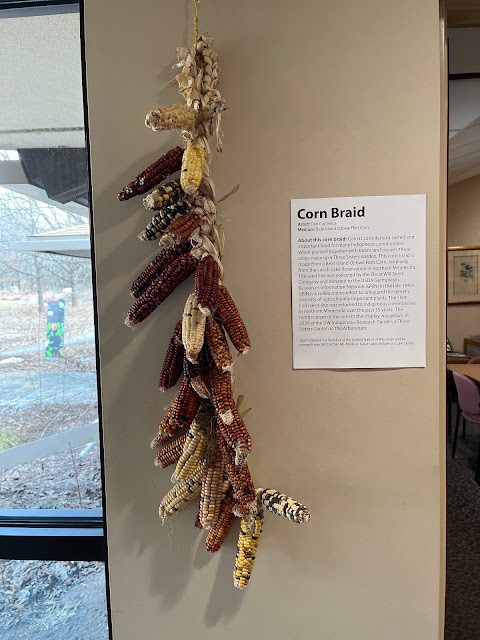I was at our arboretum this past week for a winter enrichment symposium and noticed that they had a corn braid on display. Here is the accompanying text:
The component flint corn originally came from Bear Island at my favorite northern Minnesota lake - Leech Lake. It has been stored in a seed bank and is now being redistributed to indigenous communities. I found this "how-to" video online (there is another one at Vimeo).
If you want to research this subject, search for braiding "cornhusks", not braiding corn; the latter terms will steer you to hundreds of videos/articles re human hairdos.


That's a real sloppy braid! Yes, it is hard to do, but that is the point - you make it look nice.
ReplyDeleteThat reminds me of "Seed Corn" by Andrew Wyeth.
ReplyDeleteYears ago, I attended a National Farmer's Union national meeting in Albuquerque. In his opening, the chairman described how current corn yields were still lagging what the indigenous people were able to produce. That the art and practice that had been used was lost/wiped out and that there was so much to try to learn. The native farmers accomplished massive yields without the use of any modern assistance (fertilizers, equipment, satellites).
ReplyDeleteHere is a, sort of, related link dealing with indigenous farming in nearby Northern Arizona.
https://youtu.be/28gAFESNGMU?si=QzIQKqULLOhMdTmd